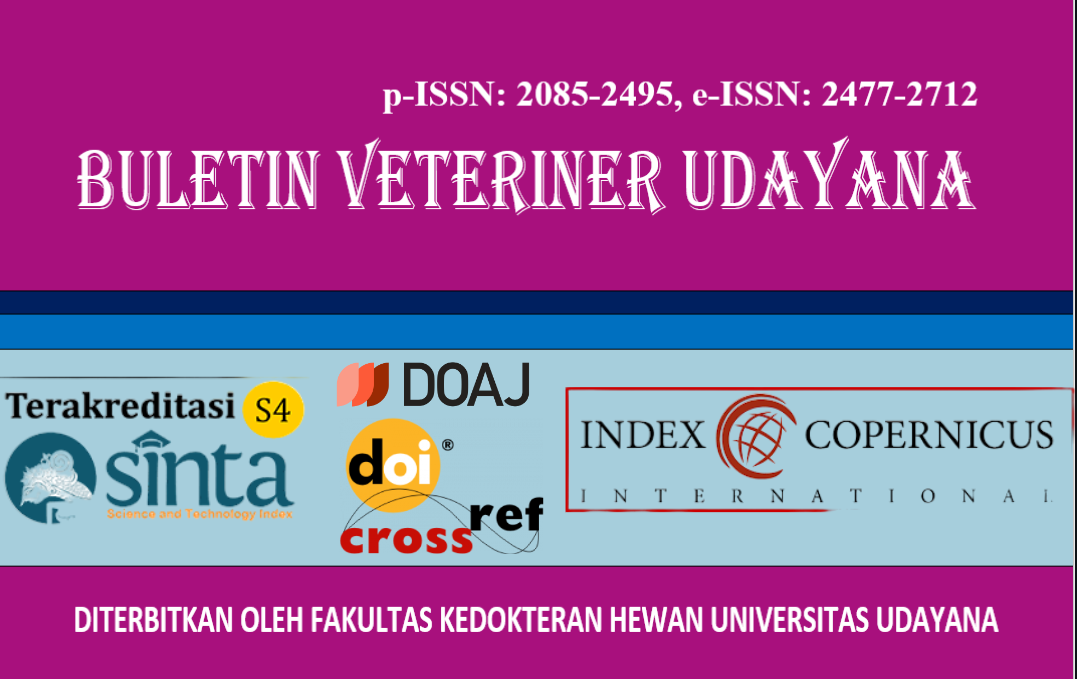ERYTHROCYTE PROFILE OF GOLDFISH FROM SELLER IN DENPASAR, BALI
DOI:
https://doi.org/10.24843/bulvet.2025.v17.i03.p06Keywords:
Carassius auratus, goldfish, erythrocytes, hematology, ornamental fish, DenpasarAbstract
Goldfish (Carassius spp.) is one of the most popular ornamental freshwater fish in Indonesia, originating from China and domesticated since 1860 with various color variants and unique body shapes resulting from selective breeding. This study aimed to analyze the erythrocyte profile of goldfish sold in Denpasar, Bali, as a baseline for health status assessment and early disease detection. This observational descriptive study examined blood samples from 10 healthy goldfish (5 males and 5 females) with lengths of 7-10 cm. Blood collection was performed at the Animal Hospital of the Faculty of Veterinary Medicine, Udayana University, using 1 ml syringes with 26G needles following anesthesia with Koi Anesthesia®. Complete blood count analysis was conducted using an Auto Hematology Analyzer Rayto RT-7600 for Vet, while blood smears were prepared using Diff-Quik staining for morphological examination. The results showed mean hemoglobin (Hb) values of 3.25 g/dL (range: 1.9-6.4 g/dL), mean hematocrit (Hct) of 4.55% (range: 0-9.1%), and mean erythrocyte count (RBC) of 0.15 × 10⁶/μL (range: 0.01-0.88 × 10⁶/μL). Erythrocyte indices revealed mean MCV of 96.85 fL (range: 81.3-112.4 fL), mean MCH of 88.35 pg (range: 52.6-124.1 pg), and mean MCHC of 80.1 g/dL (range: 48.3-151.4 g/dL). It can be concluded that the erythrocyte profile of goldfish in Denpasar shows considerable individual variation, which may reflect differences in genetic factors, environmental conditions, or handling practices during the study. It is recommended to improve blood collection techniques to minimize cell damage and contamination, potentially through additional training with experienced practitioners and protocol refinement to ensure more valid results that accurately reflect the physiological condition of goldfish.




